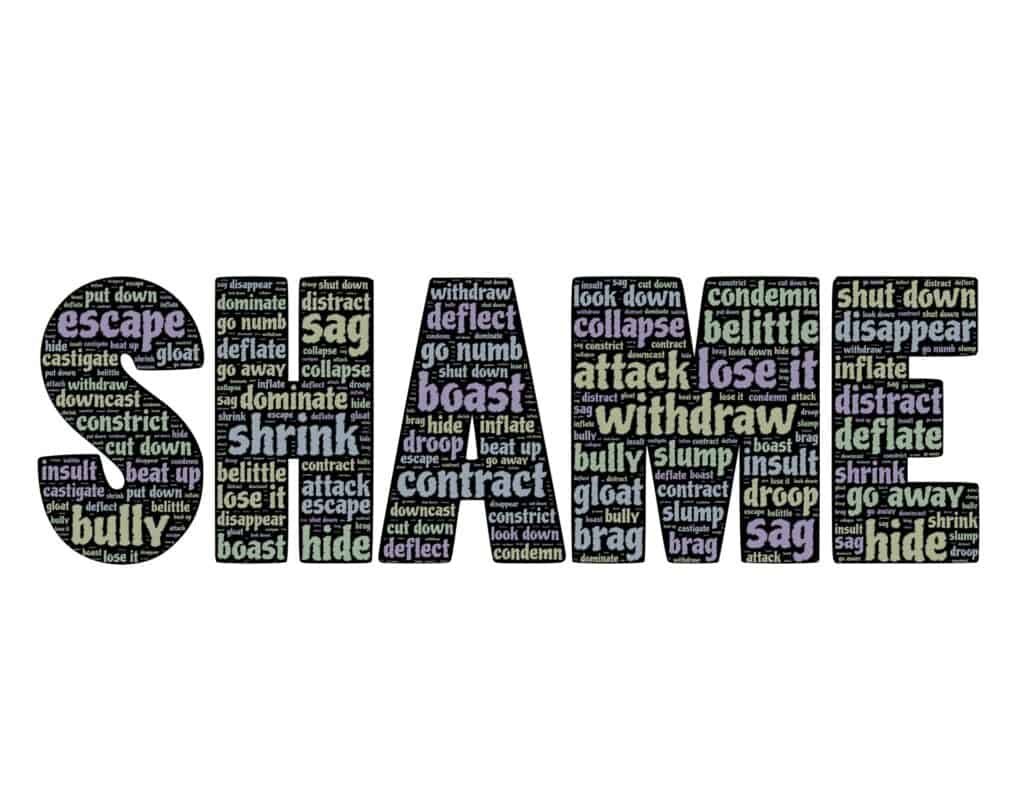Have you ever felt like you are not enough? Like you are unworthy? Unlovable?
Do you see yourself as having issues with self-esteem, self-confidence, and self-blame?
Do you often feel physical symptoms of shame, such as racing heart, tight muscles, nausea, flushed skin, thoughts racing, and blurred or acute vision?
Shame encompasses all these symptoms and more. Shame also looks a lot like anxiety and many of the physical symptoms are the same. The body goes into a fight/flight/freeze mode due to the stress of shame. The constant feeling of shame is toxic and can create a negative impact on a person’s emotional stability and physical health.
As children, we all desire and need to be loved, to be accepted, and to be cared for. We look to our parents to provide that through the attachment of our relationship with them. In adulthood, this desire continues to be present. But for some of us, those positive attachments early in our development don’t happen. And, if we experience feelings of shame as children, it becomes internalized and can create toxicity throughout a lifetime.
So, how do we overcome shame?
5 ways to help relieve shame and try to rid this negative feeling
1. Notice and label shame when it surfaces
Pay attention to your self-talk. Notice those negative, repetitive messages you tell yourself, which we call negative core beliefs. For example:
“I’m stupid”
“I’m not enough”
“I’m unlovable”
Once you start to notice those negative core beliefs and realize that shame is surfacing, validate how you are feeling and know that your beliefs are not you, they are simply a feeling that comes and goes. Notice the shame, label the shame, and let it go.
2. Talk to yourself like you would a friend
We are almost always harder on ourselves than we are on others. When we screw up, make a mistake, or don’t like the way we look, we usually criticize ourselves using negative labels. One way to help alleviate shame and to change that negative self-talk is by practicing self-compassion. This means talking to yourself like you would talk to a friend. Ask yourself, “if a friend came to me with this issue or concern what would I say to them?” Then use those words and direct them towards yourself with the same compassion and caring that you would give a friend.
3. Recognize you are not alone
Shame makes a person feel lonely, isolated, and separate from others. Know and understand that you are not alone in feeling shame. Many people experience shame and suffer from the same feelings.
4. Practice being vulnerable
Being vulnerable can be scary and intimidating. Often people hold back showing who they are out of fear of rejection or embarrassment. I always recommend people start off gradually in one area of their life and with a person they have identified they can be vulnerable with. Test it out and see how it feels after. The more practice you have being vulnerable and your authentic self, the better you will feel. Soon you will be comfortable in always being YOU! People will like and want to be around you, not the fake you. Part of that shift from being vulnerable to being authentic is speaking up for yourself, sharing who you are, establishing personal boundaries, and reflecting fully the type of person you are.
5. Create connections
Relationships are a human need and are vital. Isolation helps entrench shame and is alleviated when we connect with others. Make and keep connections, develop and build relationships so that you have a support system and trusted group of people around you. Sometimes this means stepping outside of your comfort zone and putting yourself out there. Yes, it may be uncomfortable for a short period of time but in the end the connections and relationships you make will be rewarding.
Feelings of shame are a very prevalent concern seen in therapy. If you would like more information on shame and to work through it I can help.
BOOK A SESSION
